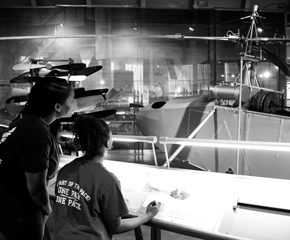More Lessons to Share: The Preservation of the Dr. Sullivan and Richie Jean Sherrod Jackson Home
Voting is the most important right of American citizens. It is a foundational tenet of American-style democracy. Dating back to the basics of the country's Revolution, our ability as Americans to decide how our country will be governed and represent our interests, across the human spectrum, has always been a practice and challenge to the status quo. Across our history, access to our civil rights reflects the deepest of American beliefs. As we reflect on 60 years of the Voting Rights Act in 2025, The Henry Ford also approaches the opportunity to re-present the story behind the Act. A story of collaboration, rooted in community, family, and justice.
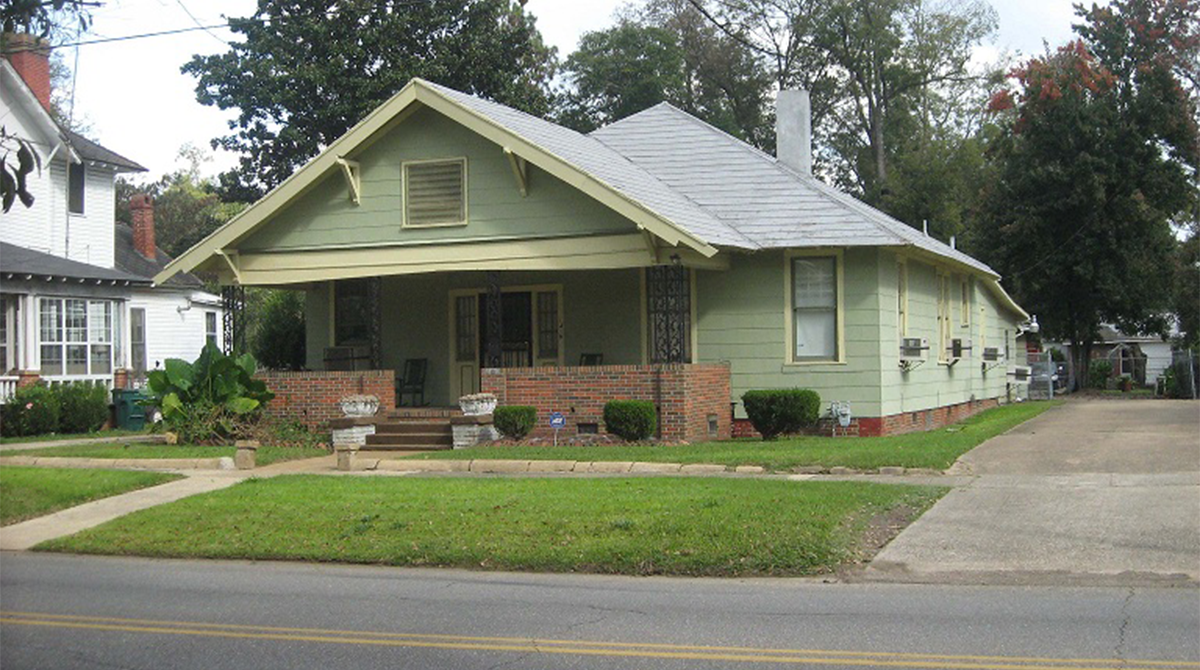
The Jackson Home at its location at 1416 Lapsley Street, Selma. / Image from the THF collections.
The Dr. Sullivan and Richie Jean Sherrod Jackson Home is pivotal as one of several key locations to the Selma Voting Rights Movement, a cornerstone of the long struggle for civil and human rights in the United States. You might be familiar with some aspects of the voting movement in Selma, a city in the heart of Alabama’s Black Belt. It is here that several organizations including the Dallas County Voters League, the Student Nonviolent Coordinating Committee, and the Southern Christian Leadership Conference all worked together between 1963 and 1965 to demand the rights promised to African Americans under the 14th and 15th Amendments: full citizenship under law to cast our vote without fear of repercussions or violence.
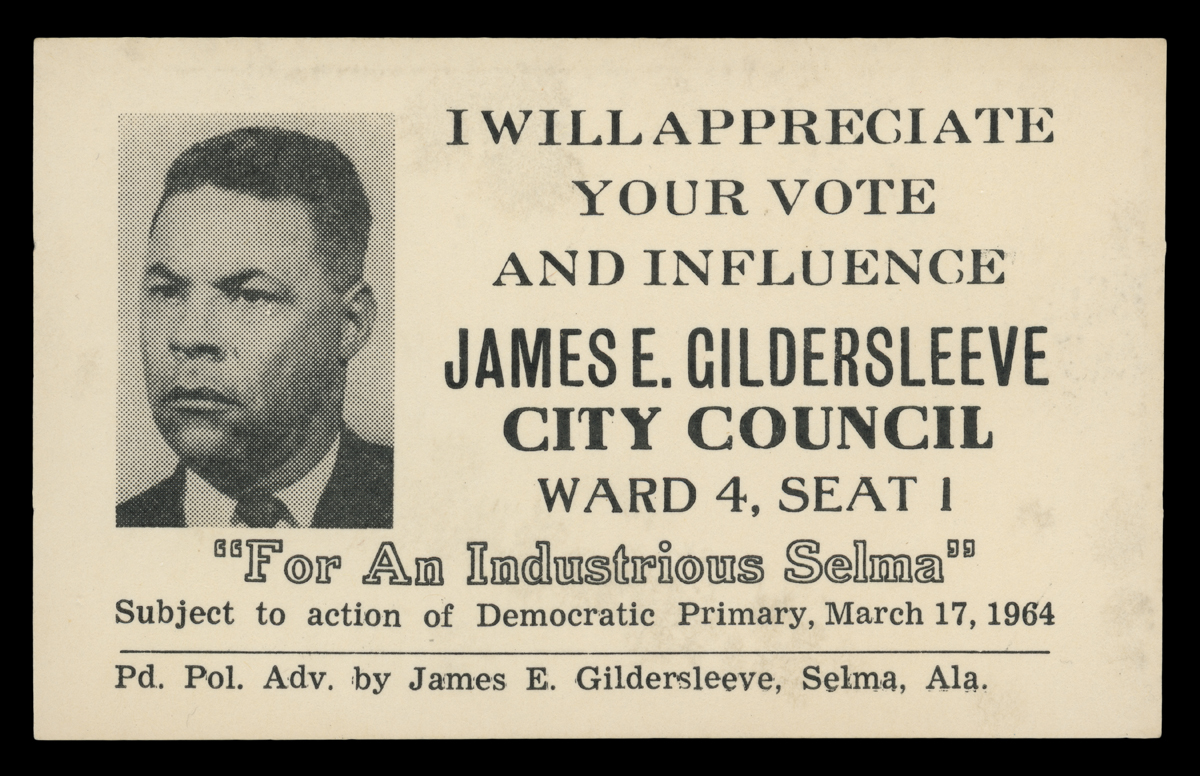
Campaign card, James E. Gildersleeve for City Council In the Democratic Primary, Selma, Alabama, March 17, 1964. The Dallas County Voters League, of which James Gildersleeve was a leading member, led local organizing in Selma./ THF721746
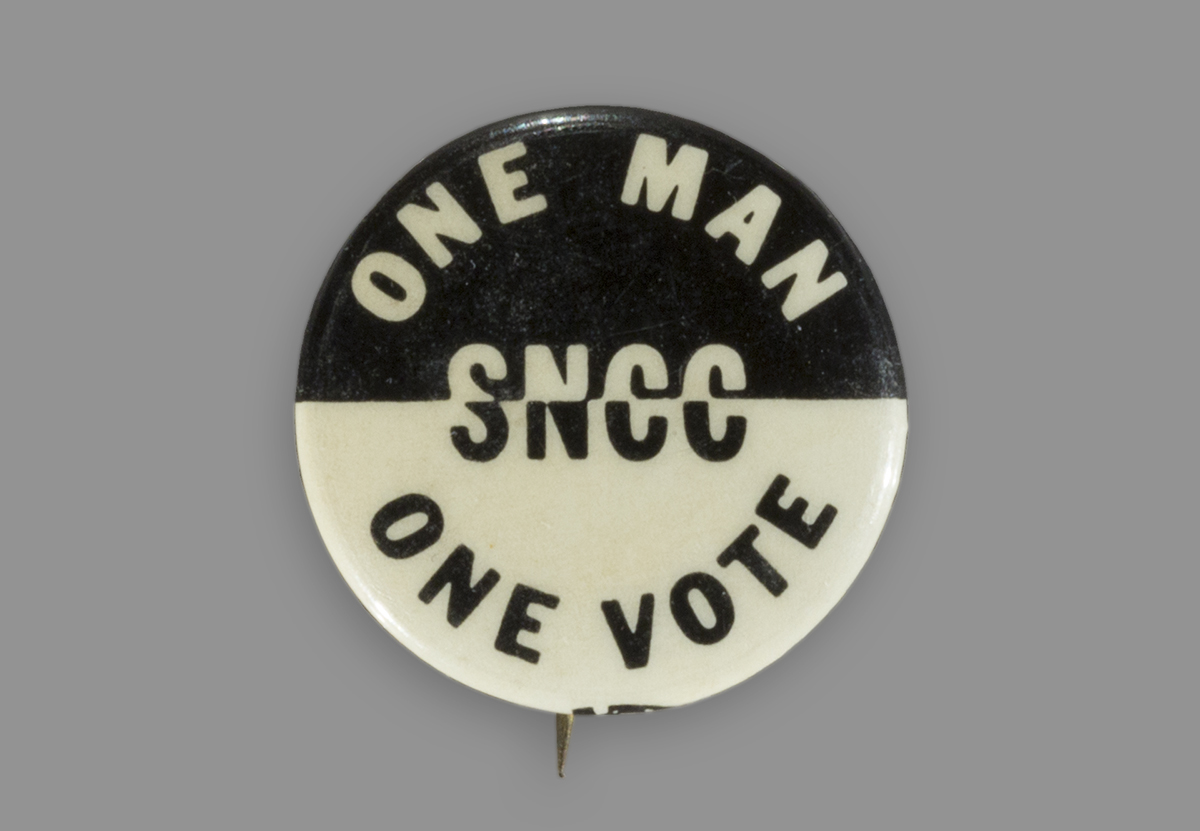
Button, "One Man One Vote SNCC," 1960-1967. / THF166834
People like Congressman John Lewis, Diane Nash, Bernard Lafayette, Amelia Boynton, Marie Foster, the Reverend Dr. Martin Luther King Jr, Andrew Young, Hosea Williams, and the Reverend Ralph Abernathy among dozens of others, supported by foot soldiers and community members on the local, state, and national levels moved to do what seemed impossible. People from across the country, with support from all over the world — all backgrounds, beliefs, and abilities — demanded that the white supremacist, legal practices of voter suppression end throughout the United States.
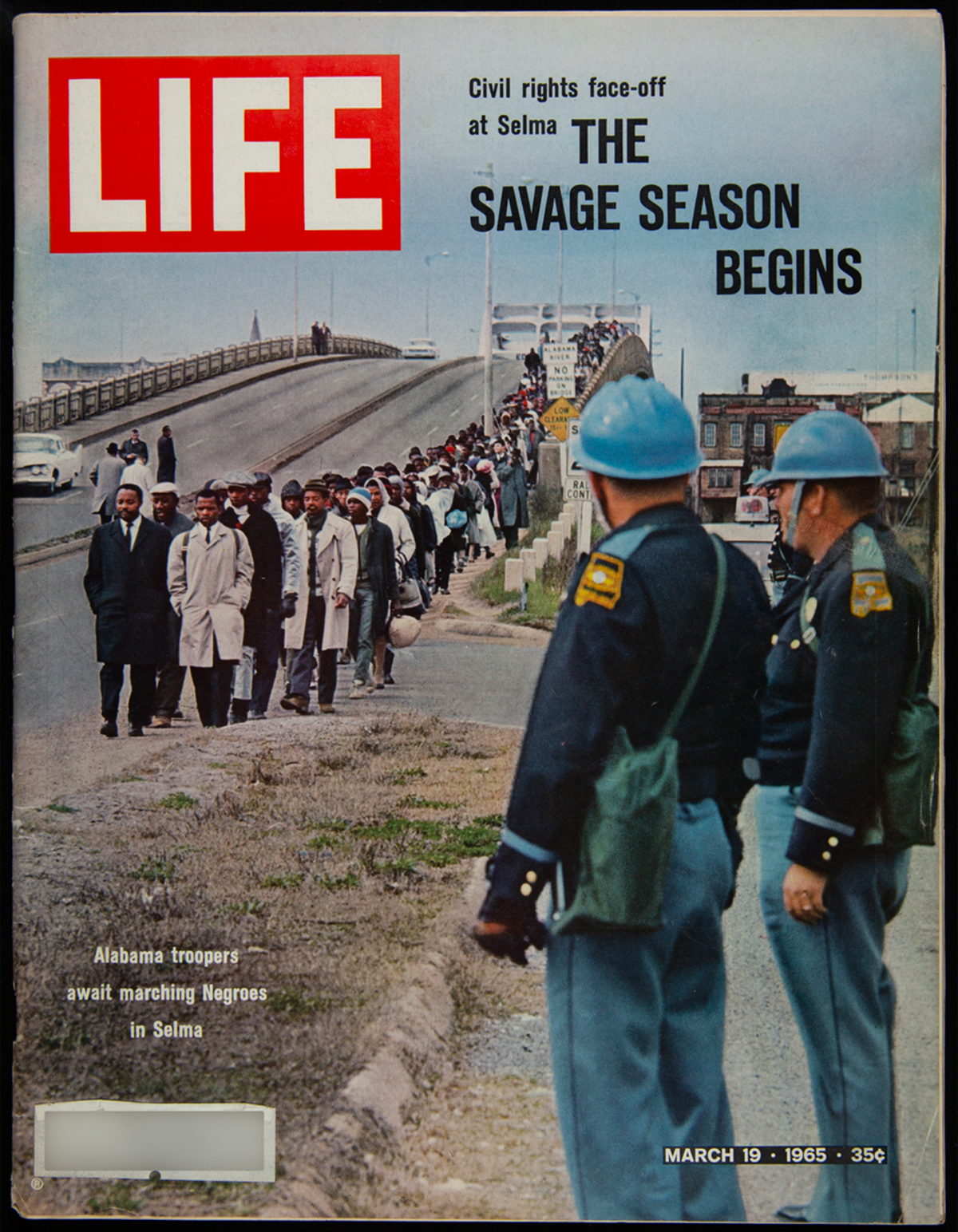
"Life" Magazine, March 19, 1965 – Cover. The “Bloody Sunday” march was captured on film, leading to hundreds coming to Selma to support protesters. / THF715919
Between January and June 1965, the Jacksons’ home became a haven for Dr. King and the headquarters for the Southern Christian Leadership Conference in Selma — with Dr. King's presence bringing the media and international attention that would be game-changing for the Selma movement. As the world looked at the violent acts that welcomed protesters on March 7, 1965 — Bloody Sunday — in shock and disgust, the calls for accountability and change reached the White House. On March 15 President Lyndon B. Johnson, in an address to the nation, declared that “we shall overcome” — his pivotal acknowledgment of the work that had been done and his willingness to move towards what would become the Voting Rights Act, signed in August 1965.
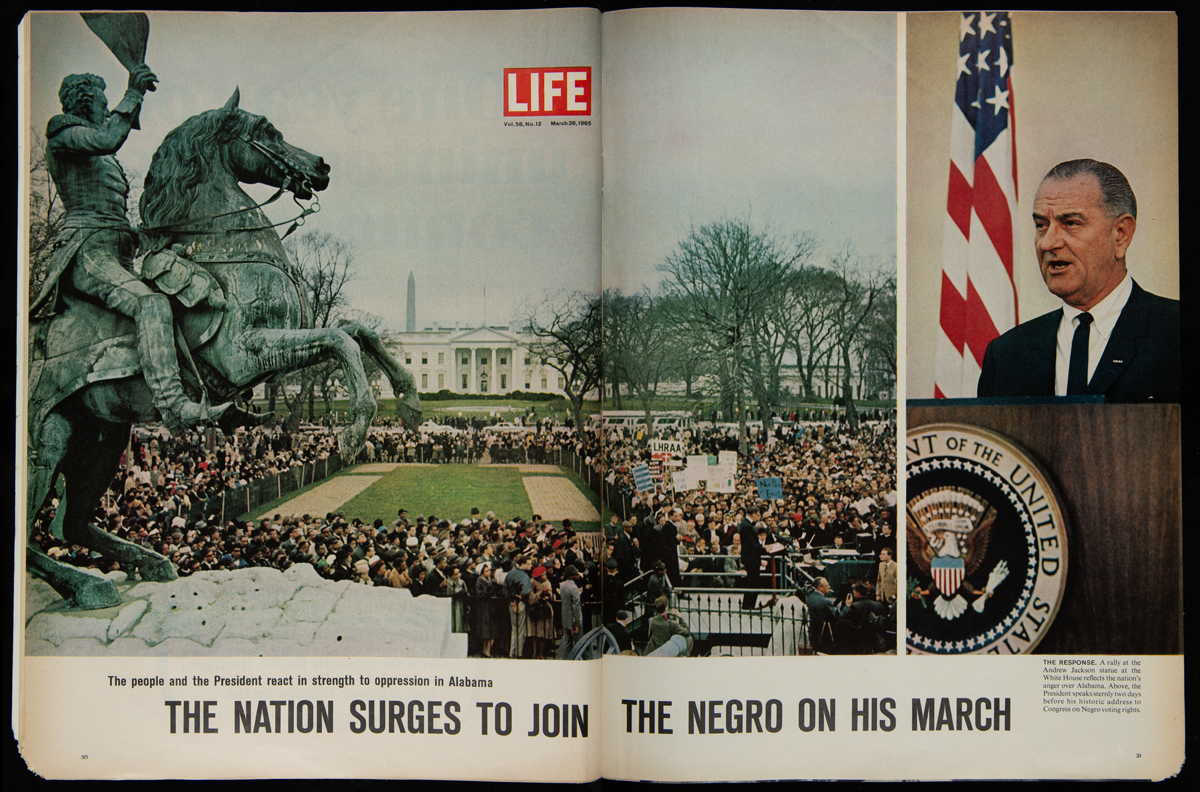
"Life" Magazine, March 26, 1965 – pg 30-31. / THF715929
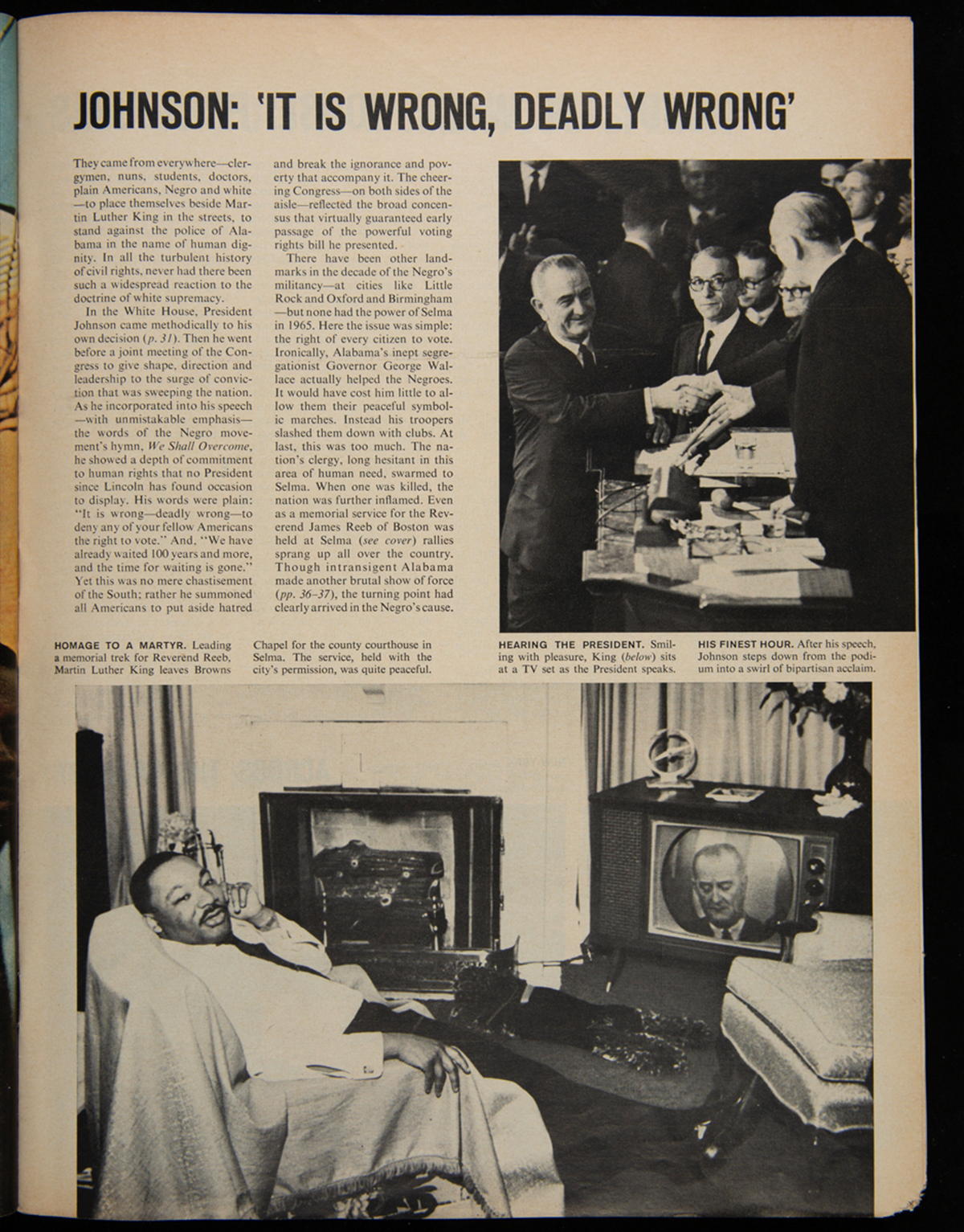
"Life" Magazine, March 26, 1965 – pg 33. Dr. King watched President Johnson deliver his speech from the living room of the Jacksons' home. / THF715931
As the first building preserved and moved to Greenfield Village in over four decades, the Jackson home presents several unique opportunities and challenges that bring together historic preservation, interpretation, and Black American history in the 21st century. Surprisingly, the easiest part in the process has been placing the Jacksons within the historical record of the Selma Voting Rights Movement — a well-documented collection being the linchpin. Sullivan and Richie Jean, knowing too well how important the event they took part in was, held on to many of the items that made their home a refuge in 1965. From the chair that Dr. King sat in to watch President Johnson address the nation, to the many cooking utensils and tools used to craft meals for movement makers and dreamers, to sentimental things like photos of family and friends in their Lapsley Street home, to the baby clothes for their one and only child. Now, these materials are helping us to bring life to the home, now on Maple Lane, as we restore the building to its 1960s appearance. The materials are also helping us shed light on a family whose connections run deep in the foundations of the Black professional and middle class in Selma and beyond.

The Jackson Home was bisected and driven in two parts to its final location in Greenfield Village. / Image from the THF collections.
What's most exciting for me is to be able to share with each of you the story of not just the Selma movement, and not just Dr. King's role — but the dozens to hundreds of everyday local people who opened their doors to ensure that those who were organizing on our behalf had places to stay, food to eat, and time to rest and to recharge for the next day's battle. Dr. Sullivan and Richie Jean Jackson, through their decision to open their door for their dear friend Dr. King, opened the door to new possibilities for our collective future. It's written all throughout Mrs. Richie Jean's book The House by the Side of the Road. In its pages you will see just how dedicated this community was to not only making things better for themselves, long before the 1960s, but also transforming the world for all of us, and the many generations to come.
It is my extreme pleasure to re-introduce the world to the story of the Jacksons — which comes to us in a moment when voting matters more than ever. Reminding us that there is so much more that this old home from Lapsley Street in Selma has left to teach us. Over the next year, the story of the Jacksons and the Selma movement will be shared by the Henry Ford team in multiple ways from preservation and collections to outreach and education and of course historic preservation — all in preparation for our opening in late spring 2026. There's much work to do but I hope all of you will open your ears, hearts, and minds to the lessons still left to be taught by the House by the Side of the Road.
Amber N. Mitchell is Curator of Black History at The Henry Ford.

